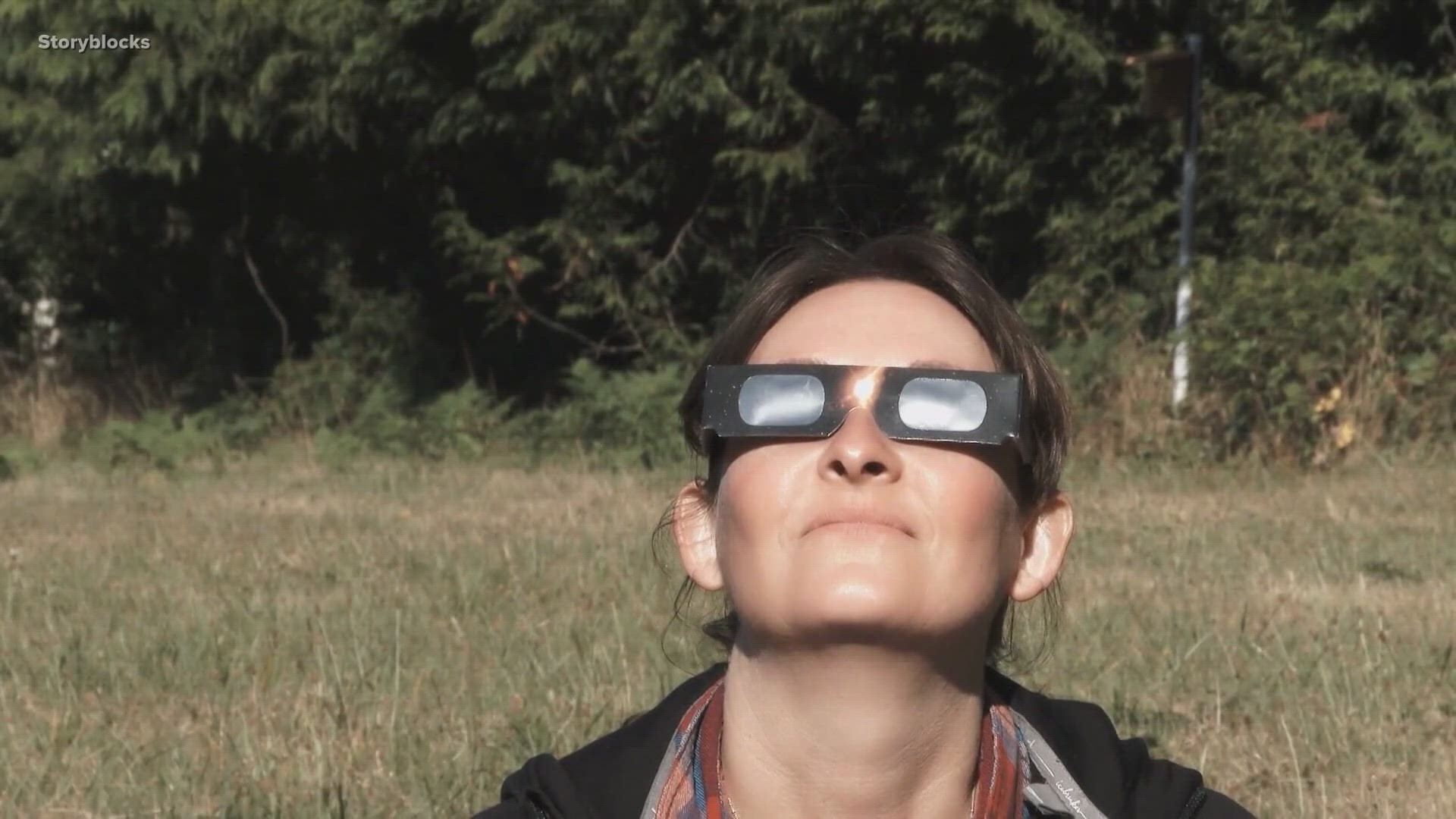TEMPLE, Texas — Get ready Central Texas, a rare and spectacular sight will be visible in the sky on Saturday, Oct. 14, an annular solar eclipse!
This will be the first time the rare event will be visible in North America since 2012.
So how can you see this celestial spectacle? Here is a breakdown of when you'll be able to see the eclipse, as well as other helpful information.
What is an annular eclipse?
An annular eclipse is an eclipse where the moon passes between the Earth and the Sun at or near its furthest point from the Earth, meaning it does not completely cover the Sun. Instead, the edges of the sun peek out from behind the moon, making it look like a "ring of fire" in the sky, according to NASA.
How well will I be able to see the annular eclipse?
The eclipse is set to take place in the late morning on Saturday, Oct. 14.
Most of Central Texas will be just outside the path of full annularity, meaning the path where the moon will be most centered over the sun, but Central Texans will still be able to see the eclipse at around 80% annularity, meaning it is still likely to be an impressive sight.
Keep an eye on the weather forecast for information on weather conditions during the eclipse.
What times are best to view the annular eclipse?
The annular eclipse is expected to last around three hours and nine minutes in total, with annularity, where the Sun is mostly covered by the moon, lasting only a few minutes.
Below is a timeline of when the eclipse will begin and when annularity will take place in the Central Texas area, according to timeanddate.com and NASA. All times are in Central Standard Time.
- 10:24 a.m.- Partial eclipse begins
- 11:52 a.m.- Annularity begins
- 11:54 a.m.- Maximum annularity
- 11:56 a.m.- Annularity ends
- 1:32 p.m.- Partial eclipse ends
NASA says it is not safe to watch the eclipse with the naked eye, as it could cause damage to the eyes. For information on how to safely view the eclipse, visit this link.
If you are not able to watch the eclipse in person, NASA will livestream the event on its website.
Itching for more eclipses? You're in luck, a total solar eclipse will also be visible across North America on April 8, 2024, with Central Texas right in the path of totality.
More eclipse stories from 6 News:

